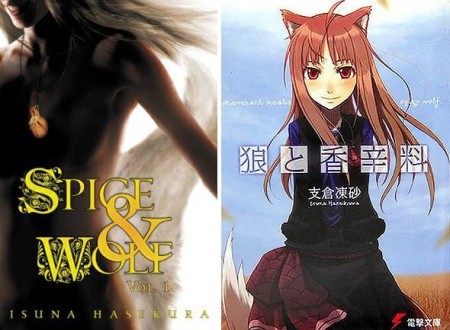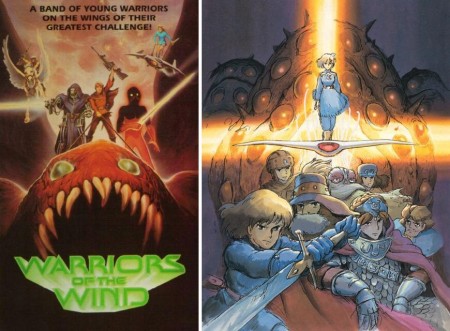Ask John: Should Fans be Upset by the American Spice & Wolf Cover?

Question:
What is your opinion of the Spice and Wolf Yen Press novel cover backlash?
Answer:
I must first say that I’m aware of any significant “backlash” over Yen Press’ plans to market the first volume of Isuna Hasekura’s Spice & Wolf novel with an original cover illustration. That’s not to say that there’s been no criticism from the American fan community, or that all reaction to the new cover has been exclusively positive. But I can’t recall any domestic distribution or marketing decision that’s ever been universally welcomed by America’s otaku community. (What that implies about the American otaku community is an entirely separate discussion.) Yen Press has explained that its goal is to have the Spice & Wolf novel appeal to an audience beyond just the small niche market of manga readers and anime fans that may be familiar with the book. That’s a respectable and legitimate goal for a book publisher trying to market a fantasy novel. The novel’s interior content, including Jyu Ayakura’s original interior illustrations, will be included unaltered. An English language version of the original Japanese book cover will be made available to American consumers. While I’m as much in favor of respecting cultural and artistic integrity as anyone, I also understand the necessary compromises of capitalism, and respect both Yen Press’ goals and its measures to appease the fans that shudder over marketing compromises.
The adage “don’t judge a book by its cover” is especially relevant in this situation. While the advice could apply to mainstream consumers that shouldn’t avoid a novel having a manga style cover illustration, it just as appropriately applies to critics that object to a Japanese fantasy novel not having a manga style cover illustration. Note that despite having manga and anime adaptations, Hasekura’s Okami to Koshinryo novel series is not manga nor anime, nor is it intrinsically connected to manga or anime. The characters within the novel are simply characters – not manga characters or anime characters. The book’s cover illustration doesn’t irrevocably turn the work into a manga novel; nor does altering the original cover illustration suddenly make the book not a manga novel. Packaging design alterations for the sake of domestic marketing have been common since the outset of the domestic anime industry, so there’s nothing unusual or particularly exceptional about this latest circumstance. Urban Vision’s domestic DVD release of the 1985 Vampire Hunter D movie used an original American created cover illustration. ADV’s release of Gatchaman featured original American packaging art by illustrator Alex Ross. Several of Central Park Media’s domestic Patlabor DVD releases used original cover artwork. FUNimation marketed its Witchblade DVDs with original American art. (Granted, it’s art from the Witchblade creators but not art that accurately reflects the design style of the Japanese drawn anime.)
I don’t want to make light of anyone’s personal distaste for the American Spice & Wolf novel cover. I only want to state that my own opinion is that the objection is largely meaningless. I’ll admit that I’m among the camp that would prefer to see the novel released in America the way its Japanese creators and publisher designed it. But those Japanese creators and publisher created the original cover for a Japanese audience, so I can sympathize with an American publisher’s decision to create an American cover for an American audience. It may be of minimal consolation, but history reminds us that, after all, it could be worse.

Add a Comment
You must be logged in to post a comment.


I think the problem with the cover is that people who expect a bodice-ripper, or similar smut, will probably be disappointed, and Yen ends up shooting itself in the foot, anyway. Also, the Gatchman thing was done by a fan of the show. Meanwhile, the Spice and Wolf thing looks like it’s done by someone who knows jack-shit about the series.
Yen Press did the exact same thing with their English release of the first Haruhi Suzumiya novel. They made a paperback cover version with an original design (but left all of Noizi Ito’s illustrations inside), and they also made a hardcover version with the Japanese cover available. The paperback cover irked me at first, but I can understand their desire to appeal to readers beyond anime/manga fans. I personally think it would be great if readers besides those who like anime and manga would become interested in light novels.
My first thought was “Does Yen Press have rights to pictures from the anime series?”